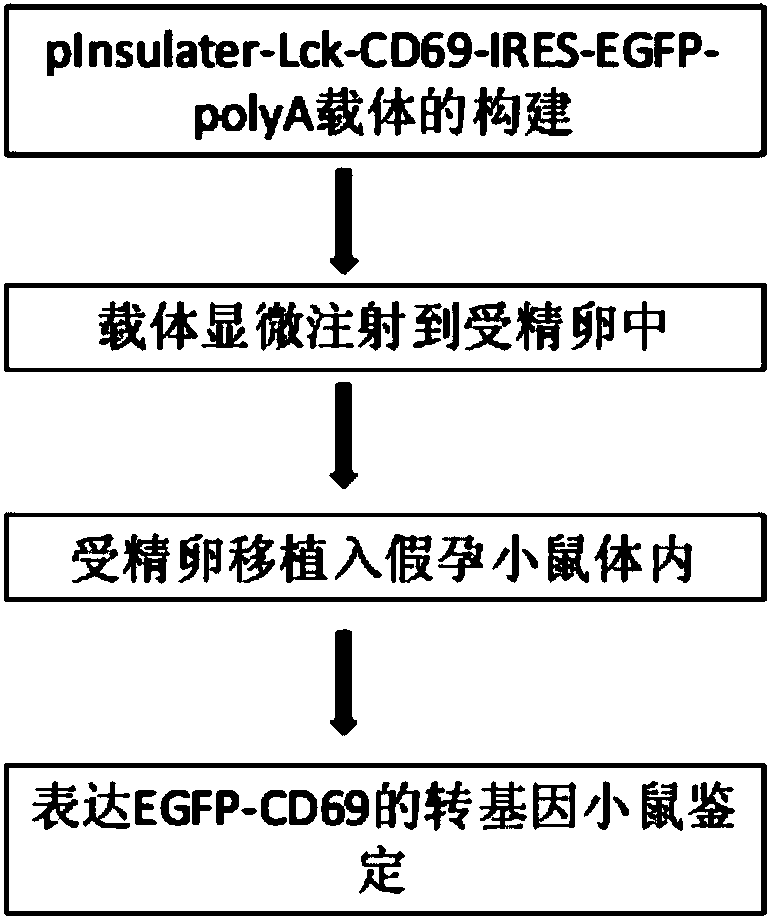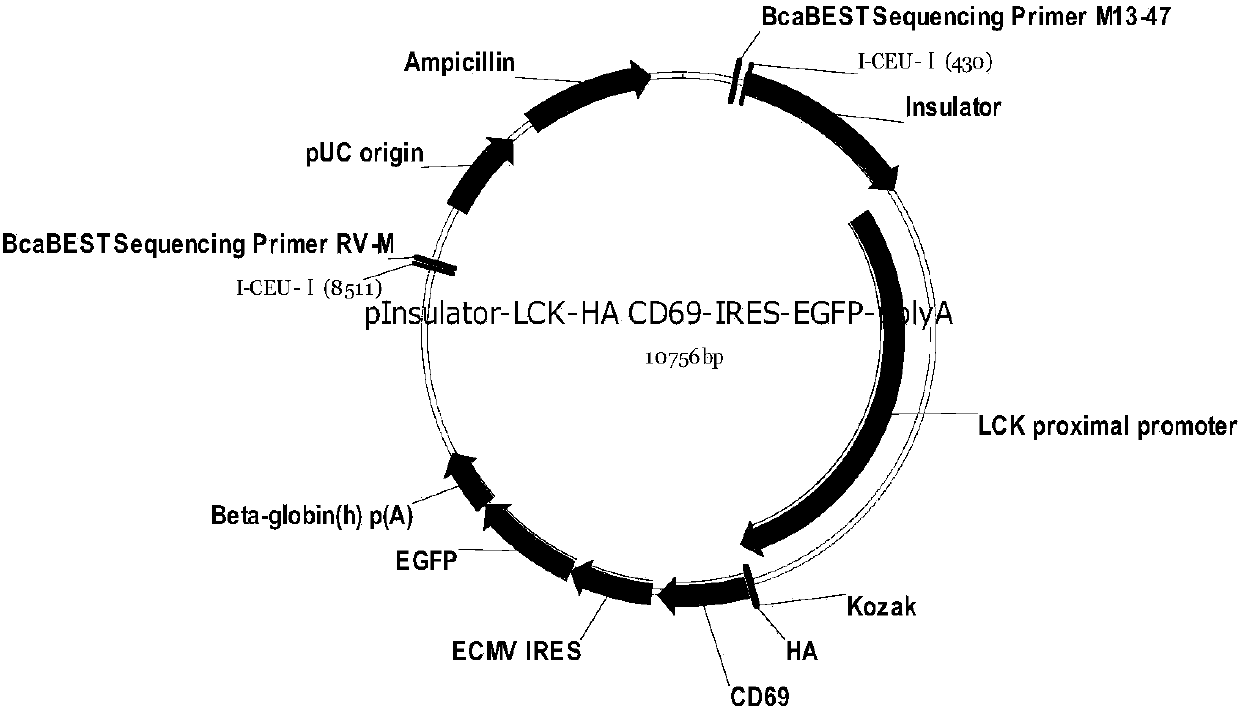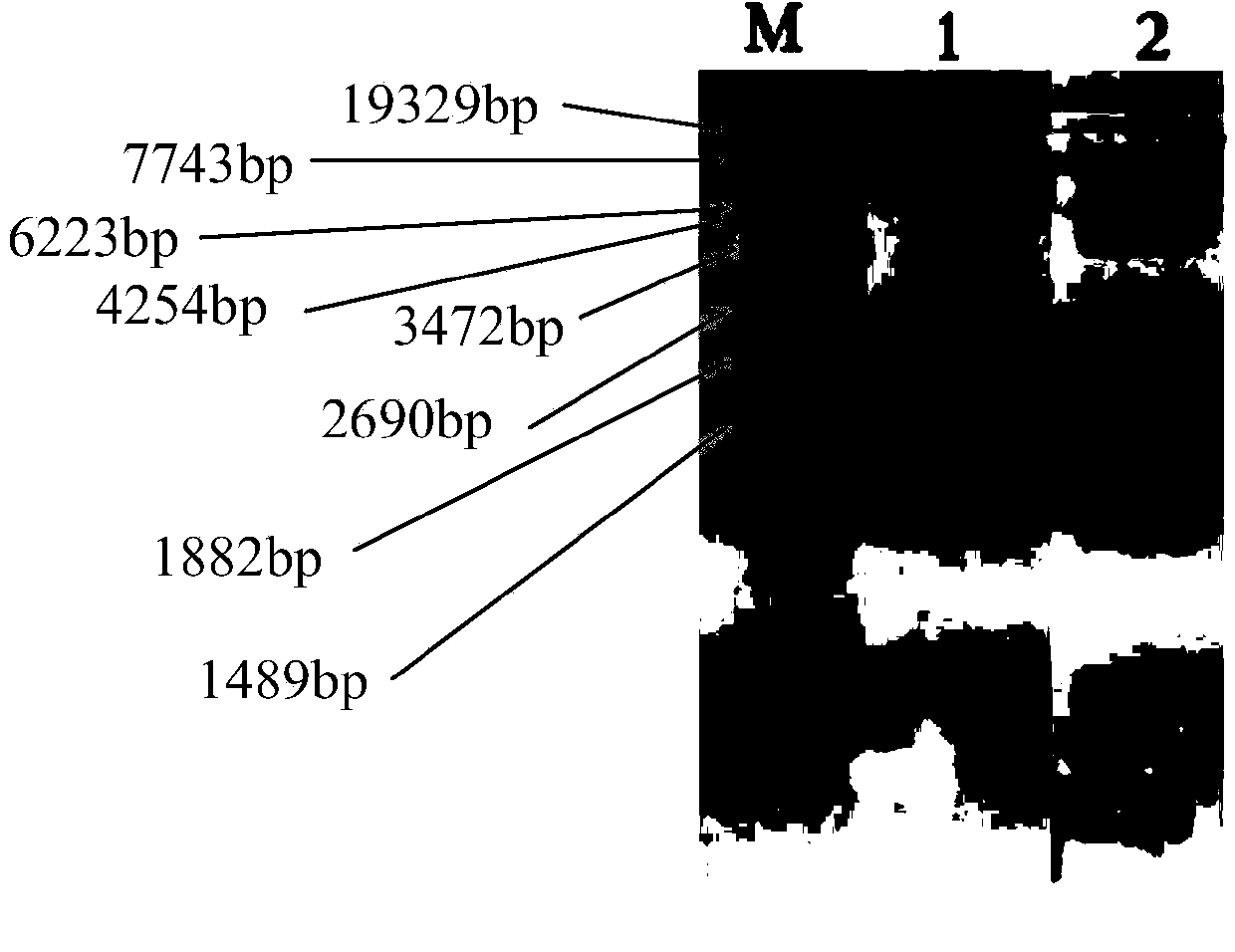Method for building transgenic mouse animal model
A technology of transgenic mice and animal models, applied in the direction of introducing foreign genetic material using vectors, recombinant DNA technology, animal husbandry, etc., can solve the problems of complicated detection of CD69 expression, and achieve the effect of specificity in function and physiological significance
- Summary
- Abstract
- Description
- Claims
- Application Information
AI Technical Summary
Problems solved by technology
Method used
Image
Examples
Embodiment 1
[0028] Construction of 1pInsulater-LCK-CD69-IRES-EGFP recombinant plasmid
[0029] 1) Extract RNA from mouse lung tissue
[0030] Material: B6 mice
[0031] Reagents: RNA extraction reagent RNAiso Plus (Takara company), 0.1% volume concentration of diethyl pyrocarbonate (DEPC solution), RNase-free water (DEPC-treated water), 75% volume concentration of ethanol solution (treated with DEPC water), chloroform.
[0032] One B6 mouse (B6 is the strain of the mouse) was sacrificed, the lung tissue of the mouse was removed, weighed, quickly frozen with liquid nitrogen, then moved to a mortar pre-cooled with liquid nitrogen and ground into powder, during which the Add liquid nitrogen to keep the temperature low. Add 1ml RNAiso Plus to every 50-100mg tissue of the ground sample to completely cover the tissue powder, let it stand at room temperature until the tissue completely dissolves and becomes a transparent liquid, centrifuge at 12000g×4min at 4°C, draw the supernatant and trans...
PUM
 Login to View More
Login to View More Abstract
Description
Claims
Application Information
 Login to View More
Login to View More - R&D
- Intellectual Property
- Life Sciences
- Materials
- Tech Scout
- Unparalleled Data Quality
- Higher Quality Content
- 60% Fewer Hallucinations
Browse by: Latest US Patents, China's latest patents, Technical Efficacy Thesaurus, Application Domain, Technology Topic, Popular Technical Reports.
© 2025 PatSnap. All rights reserved.Legal|Privacy policy|Modern Slavery Act Transparency Statement|Sitemap|About US| Contact US: help@patsnap.com



